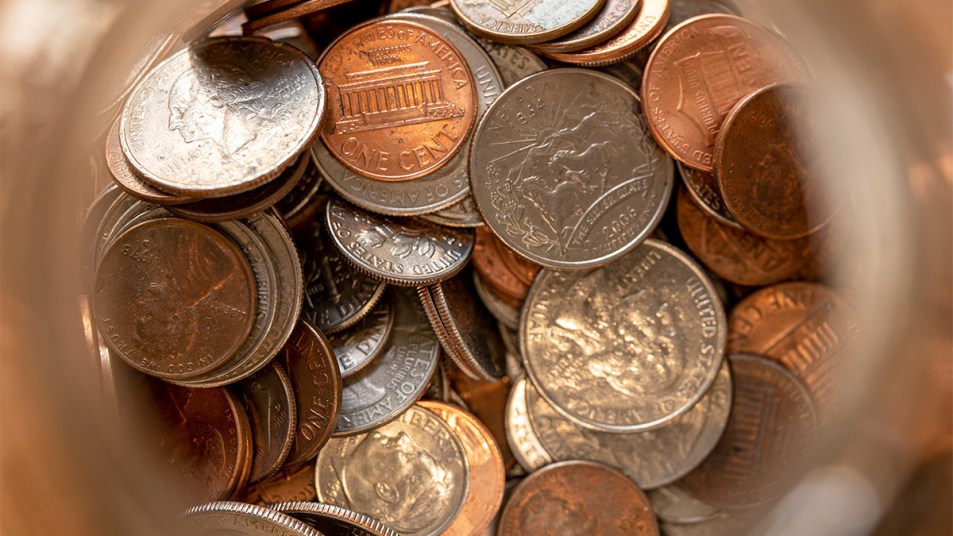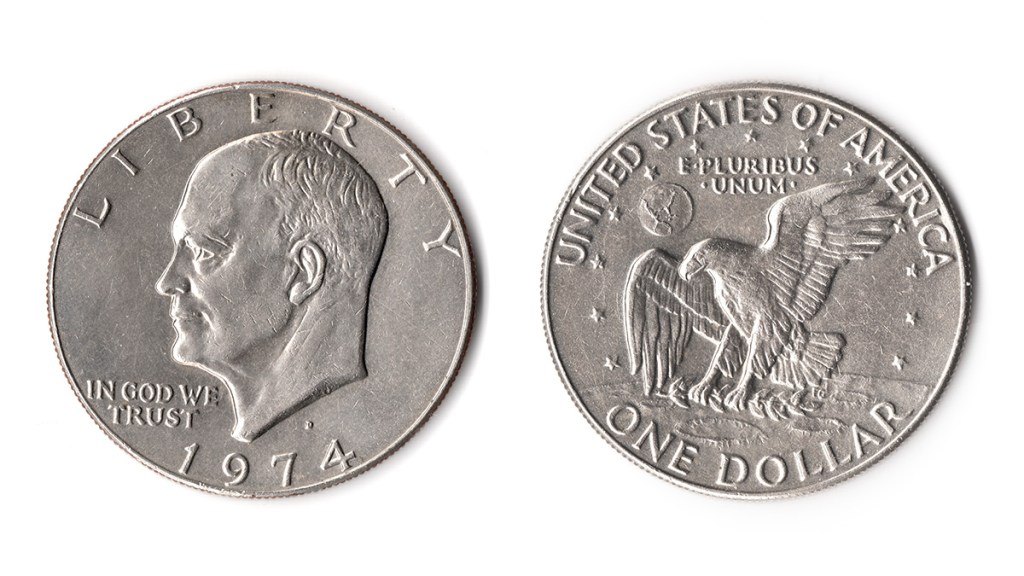Check Your Change Jar — This Rare Coin Once Sold for $18,0000 at Auction
Turn spare change into serious cash.

As you’re spring cleaning your home, don’t forget to go through your change jar. Why? A special coin worth a lot of money could be hiding among your spare pennies and dimes. In fact, coming across a piece like the 1974 silver dollar coin means that a huge pay-day is on the horizon. This coin (also called an “Eisenhower Dollar”) has sold for thousands at various auctions. Plus, the coin is even more valuable if it has manufacturing errors that make it one of a kind. Curious about the factors that determine the value of a 1974 silver dollar coin? Here’s the vibrant history and design qualities behind this rare item.
What’s the history of the 1974 silver dollar coin?
The 1974 silver dollar coin is truly a piece of history. Designed by US Mint Chief Engraver Frank Gasparro, this coin features a portrait of President Dwight Eisenhower on the front — making him the first US president to appear on a circulating dollar coin. The back of the coin sports Gasparro’s depiction of the Apollo 11 insignia, with a bald eagle landing on the moon while clutching an olive branch.

This coin was also the first circulating silver dollar since 1935, the same year the Peace Dollar was discontinued. Eisenhower Dollar coins were manufactured between 1971 and 1978. However, a series of these San Francisco-minted 40 percent silver coins were no longer made after 1974.
The two types of Eisenhower Silver Dollar coins containing 40 percent silver are called “brown Ikes” and “blue Ikes.” (Ike was Eisenhower’s lifelong nickname.) Here’s what makes the two coins different from each other:
- Brown Ikes: These coins were individually packaged in brown boxes with a golden eagle seal. These coins are known as “proof coins” — which means they’re the highest quality of coin produced by the US Mint. Hence why, brown Ikes were initially sold for $10 per coin compared to the $3 issue price for each blue Ike.
- Blue Ikes: These coins are referred to as being “uncirculated,” since they weren’t used like everyday currency. Each blue Ike produced was wrapped in cellophane and packaging in a blue outer envelope.
These two 1974 silver dollar coins were made specifically for collectors, but other mints in Philadelphia and Denver produced these coins for general circulation. The 1974 silver dollar coins produced outside of San Francisco were made with a combination of nickel and copper called clad. Surprisingly, these coins become just as valuable as the San Francisco-minted versions when they have manufacturing errors.
What are the common errors on some Eisenhower dollars?
Mistakes are often viewed as negative, but in the case of a 1974 silver dollar coin, they’re actually a good thing. Coin errors like missing parallel lines on the edge or the date listed twice on the front make it stand out in the market. As a result, your imperfect coin could earn you extra money. It’s ideal to let an appraiser determine how an error on your specific coin factors into its value. In the meantime, watch the video below from the Couch Collectibles to hear an explanation of the significance of 1974 silver dollar errors.
What’s the value of a 1974 silver dollar coin?
While all 1974 silver dollars aren’t the same, the market for these coins is buzzing. As a matter of fact, a 1974 Eisenhower Silver Dollar without a mint mark sold for $18,000 at an auction last summer. Plus, an uncirculated and unmarked coin is currently listed at $7,295.00 on eBay. Other eBay listings include a proof San Francisco-minted silver dollar going for $3,750, and a Denver-minted coin priced at $3,975.
So, dig around your change jar and maybe you’ll turn spare change into serious cash. As you’re searching your money jar, keep an eye out for some other highly valuable finds, like the Flowing Hair dollar or Morgan Silver dollar!












